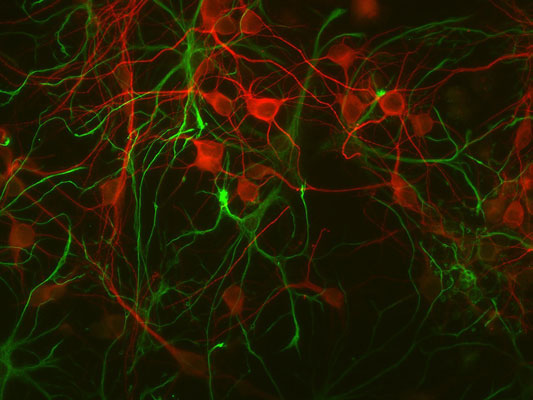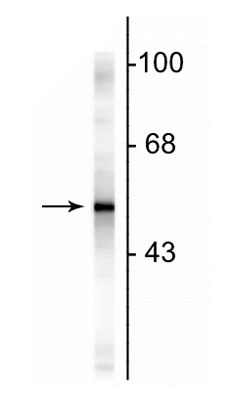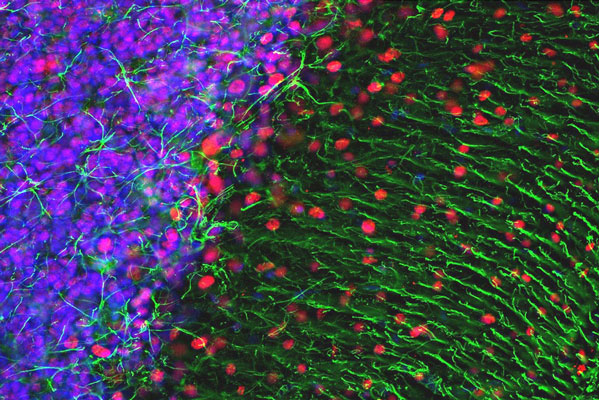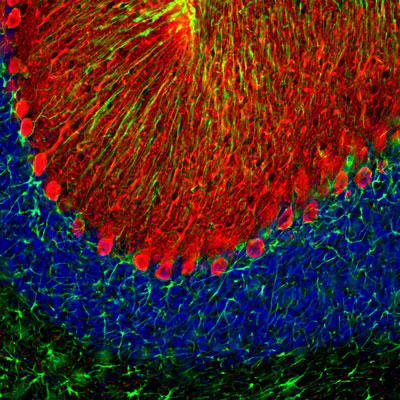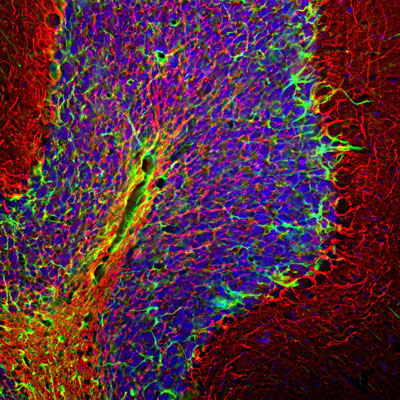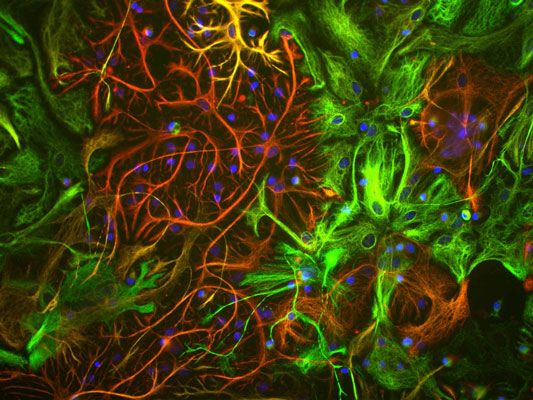Anti-Glial Fibrillary Acidic Protein (GFAP) Antibody
Our Anti-Glial Fibrillary Acidic Protein (GFAP) primary antibody from PhosphoSolutions is rabbit pol
- SPECIFICATION
- CITATIONS
- PROTOCOLS
- BACKGROUND

Application
| WB, IHC |
|---|---|
| Primary Accession | P14136 |
| Reactivity | Bovine, Chicken, Drosophila |
| Host | Rabbit |
| Clonality | Polyclonal |
| Isotype | IgG |
| Calculated MW | 49880 Da |
| Gene ID | 2670 |
|---|---|
| Other Names | wu:fb34h11 antibody, ALXDRD antibody, cb345 antibody, etID36982.3 antibody, FLJ42474 antibody, FLJ45472 antibody, GFAP antibody, GFAP_HUMAN antibody, gfapl antibody, Glial fibrillary acidic protein antibody, Intermediate filament protein antibody, wu:fk42c12 antibody, xx:af506734 antibody, zgc:110485 antibody |
| Target/Specificity | Glial Fibrillary Acidic Protein (GFAP) was discovered by Amico Bignami and co-workers as a major fibrous protein of multiple sclerosis plaques (1). It was subsequently found to be a member of the 10nm or intermediate filament (IF) family, specifically the IF family Class III, which also includes peripherin, desmin and vimentin. GFAP is strongly and specifically expressed in astrocytes and certain other astroglia in the CNS, in satellite cells, peripheral ganglia, and in non-myelinating Schwann cells in peripheral nerves. In many damage and disease states GFAP expression is heavily upregulated in astrocytes. In addition, neural stem cells frequently strongly express GFAP. Point mutations in the protein coding region of the GFAP gene lead to Alexander disease which is characterized by the presence of abnormal astrocytes containing GFAP protein aggregates known as Rosenthal fibers (2). |
| Dilution | WB~~1:1000 IHC~~1:100~500 |
| Format | Neat Serum |
| Storage | Maintain refrigerated at 2-8°C for up to 6 months. For long term storage store at -20°C in small aliquots to prevent freeze-thaw cycles. |
| Precautions | Anti-Glial Fibrillary Acidic Protein (GFAP) Antibody is for research use only and not for use in diagnostic or therapeutic procedures. |
| Shipping | Blue Ice |

Thousands of laboratories across the world have published research that depended on the performance of antibodies from Abcepta to advance their research. Check out links to articles that cite our products in major peer-reviewed journals, organized by research category.
info@abcepta.com, and receive a free "I Love Antibodies" mug.
Provided below are standard protocols that you may find useful for product applications.
Background
Glial Fibrillary Acidic Protein (GFAP) was discovered by Amico Bignami and co-workers as a major fibrous protein of multiple sclerosis plaques (1). It was subsequently found to be a member of the 10nm or intermediate filament (IF) family, specifically the IF family Class III, which also includes peripherin, desmin and vimentin. GFAP is strongly and specifically expressed in astrocytes and certain other astroglia in the CNS, in satellite cells, peripheral ganglia, and in non-myelinating Schwann cells in peripheral nerves. In many damage and disease states GFAP expression is heavily upregulated in astrocytes. In addition, neural stem cells frequently strongly express GFAP. Point mutations in the protein coding region of the GFAP gene lead to Alexander disease which is characterized by the presence of abnormal astrocytes containing GFAP protein aggregates known as Rosenthal fibers (2).
If you have used an Abcepta product and would like to share how it has performed, please click on the "Submit Review" button and provide the requested information. Our staff will examine and post your review and contact you if needed.
If you have any additional inquiries please email technical services at tech@abcepta.com.













 Foundational characteristics of cancer include proliferation, angiogenesis, migration, evasion of apoptosis, and cellular immortality. Find key markers for these cellular processes and antibodies to detect them.
Foundational characteristics of cancer include proliferation, angiogenesis, migration, evasion of apoptosis, and cellular immortality. Find key markers for these cellular processes and antibodies to detect them. The SUMOplot™ Analysis Program predicts and scores sumoylation sites in your protein. SUMOylation is a post-translational modification involved in various cellular processes, such as nuclear-cytosolic transport, transcriptional regulation, apoptosis, protein stability, response to stress, and progression through the cell cycle.
The SUMOplot™ Analysis Program predicts and scores sumoylation sites in your protein. SUMOylation is a post-translational modification involved in various cellular processes, such as nuclear-cytosolic transport, transcriptional regulation, apoptosis, protein stability, response to stress, and progression through the cell cycle. The Autophagy Receptor Motif Plotter predicts and scores autophagy receptor binding sites in your protein. Identifying proteins connected to this pathway is critical to understanding the role of autophagy in physiological as well as pathological processes such as development, differentiation, neurodegenerative diseases, stress, infection, and cancer.
The Autophagy Receptor Motif Plotter predicts and scores autophagy receptor binding sites in your protein. Identifying proteins connected to this pathway is critical to understanding the role of autophagy in physiological as well as pathological processes such as development, differentiation, neurodegenerative diseases, stress, infection, and cancer.
